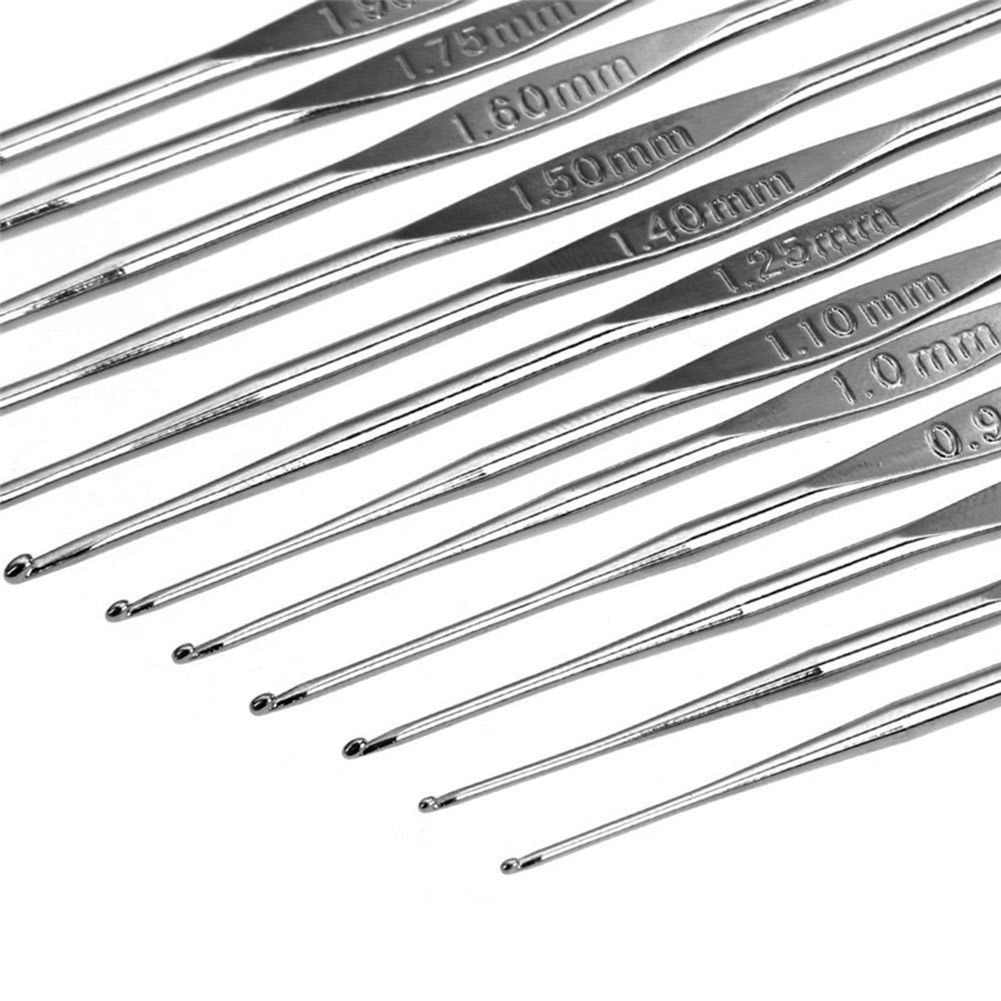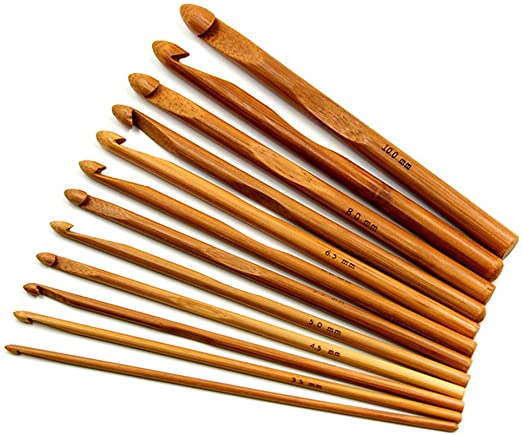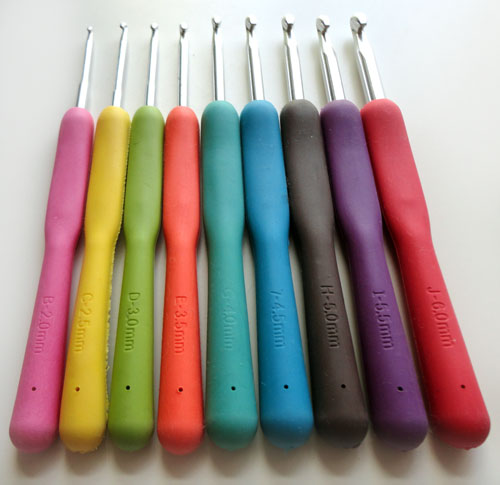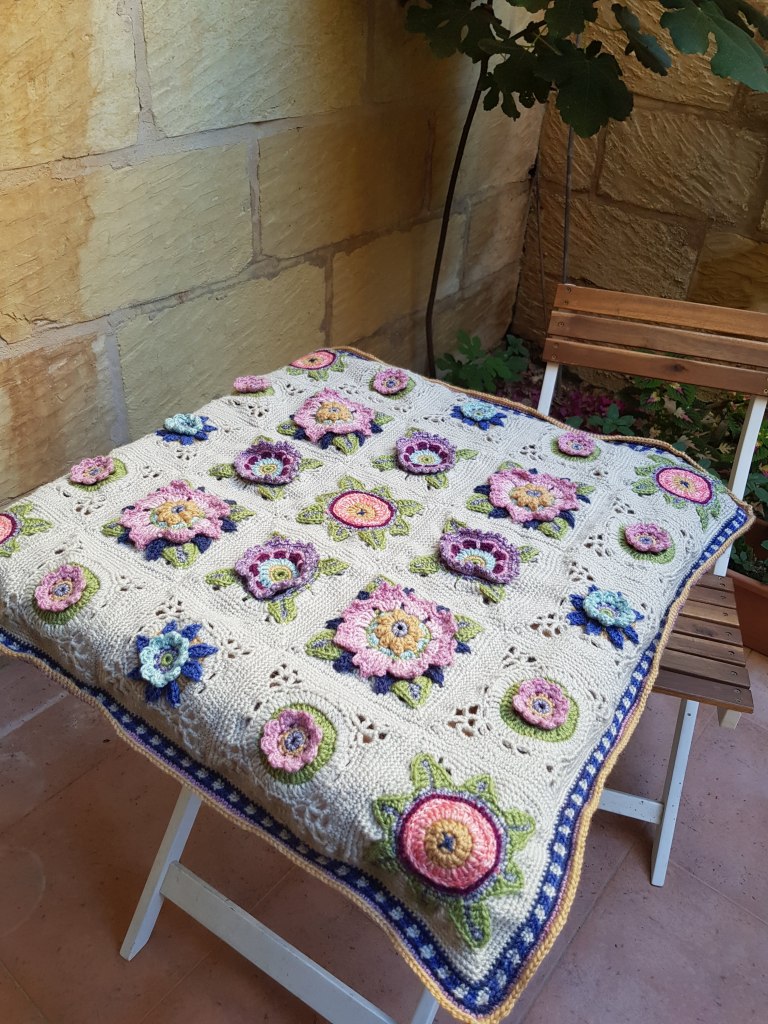The crochet hook is such a simple implement and pretty much the only tool with which you can fully create simple or complex projects. But have you ever wondered about it’s history? Where did this originate from? Who invented it? I sure have, and I can say, that scouring the net for a definitive answer has left me wanting. Nonetheless, here I will share with you what information I have found about the history of the crochet hook, as well as about the variety of hooks we have around today.
I’m sure that if you are a crocheter, it’s more than likely that you own more than one crochet hook – in fact, many enthusiasts have entire collections. But how do they differ? Do you really “need” all those crochet hooks?
Lets start by looking at the history of crochet.
Cloaked in Mystery

The word “crochet” originates in the French language and means “little hook”. But it doesn’t mean that crochet as a craft originated in France. In fact, while historical evidence including from archaeological discoveries and historical documents about fabrics crafted using techniques like embroidery, weaving & knitting from as far back as the 11th Century have been found, the same cannot be said of crochet – it’s history is not clear and no one is quite sure when or where crochet started. Researchers have different theories on where it originated, some suggesting origins in Arabia, or China or even South America. It would then have possibly spread to Europe through trade routes. Nonetheless, researchers do agree that it is only in the 1800s that they find convincing evidence of crochet in Europe.
Enough about the history – let’s move to the actual hooks themselves.
Size matters
Crochet hooks come in a wide range of sizes. Size can be denoted by letters and numbers (typically used in US) or in millimetres (Refer to the conversion chart below, courtesy of http://www.crochet.com). The choice of which size to use is often determined by the yarn . In fact, most yarn will indicate on it’s label the recommended size to use. Sometimes, however, the choice will be dictated by the pattern you are following. In addition, it will depend a lot on your stitch tension – and you may need to use a different hook size. But, it really is up to you, and you should use whatever hook you feel most comfortable with! I do a lot of projects using DK yarn, so my favourite and most frequently used hook size is 4.0mm (G-6).

Which Material?

Long ago, before the time when you could just nip to your local craft shop to buy a crochet hook, I can imagine anyone who wanted to crochet having to fashion a hook out of whatever materials were available – so people probably would have used animal bones, fishbones, horn, wooden twigs/sticks, or some wire.
Today, you can easily get a hold of ready-made crochet hooks made of all sorts of materials – metallic ones made of aluminium or steel, wooden (bamboo) ones or plastic ones. There are designer hooks which have beautifully crafted handles made of glass, ceramic, even plastic. Some have a soft rubber grip for comfort (ergonomic hooks). There is no end to the variety you can find. Personally, I only use the aluminium and steel hooks and have been doing so for as long as I remember. I tried using an ergonomic one with a “comfortable” grip – but couldn’t get used to it and actually found it rather uncomfortable! But, that’s just me – friends who also crochet would swear by the ergonomic hooks! I do, however want to invest in a handcrafted hook one day, as I think they are absolutely stunning!
Types of Hooks
The type of hook you choose will depend on your preference, but here are a few things to keep in mind.

Steel Hooks – usually the smallest sized hooks are steel hooks and often used for crocheting with fine thread/yarn , such as that used for doilies

Aluminium Hooks – these come in a wide range of sizes. They are relatively light weight and allow you to crochet quickly and smoothly.

Plastic Hooks – available in a wide range of sizes including jumbo size. They are made out of hollowed out plastic allowing for them to be light weight.

Bamboo Hooks – these are available in a mid range of sizes. The wood is warm to the touch and comfortable.

Tunisian Hooks – these are used in Tunisian crochet. They are longer than the regular hooks, and some even have a hook at both ends

Ergonomic Hooks – these have larger soft handles and are designed to reduce strain on your hand from gripping a small hook for a long period of time.

Knook – this is a long crochet hook with a hole running through one end.

Illuminated hooks – these emit light from the hook, making crochet in the dark possible.
So, what is your favourite crochet hook?




